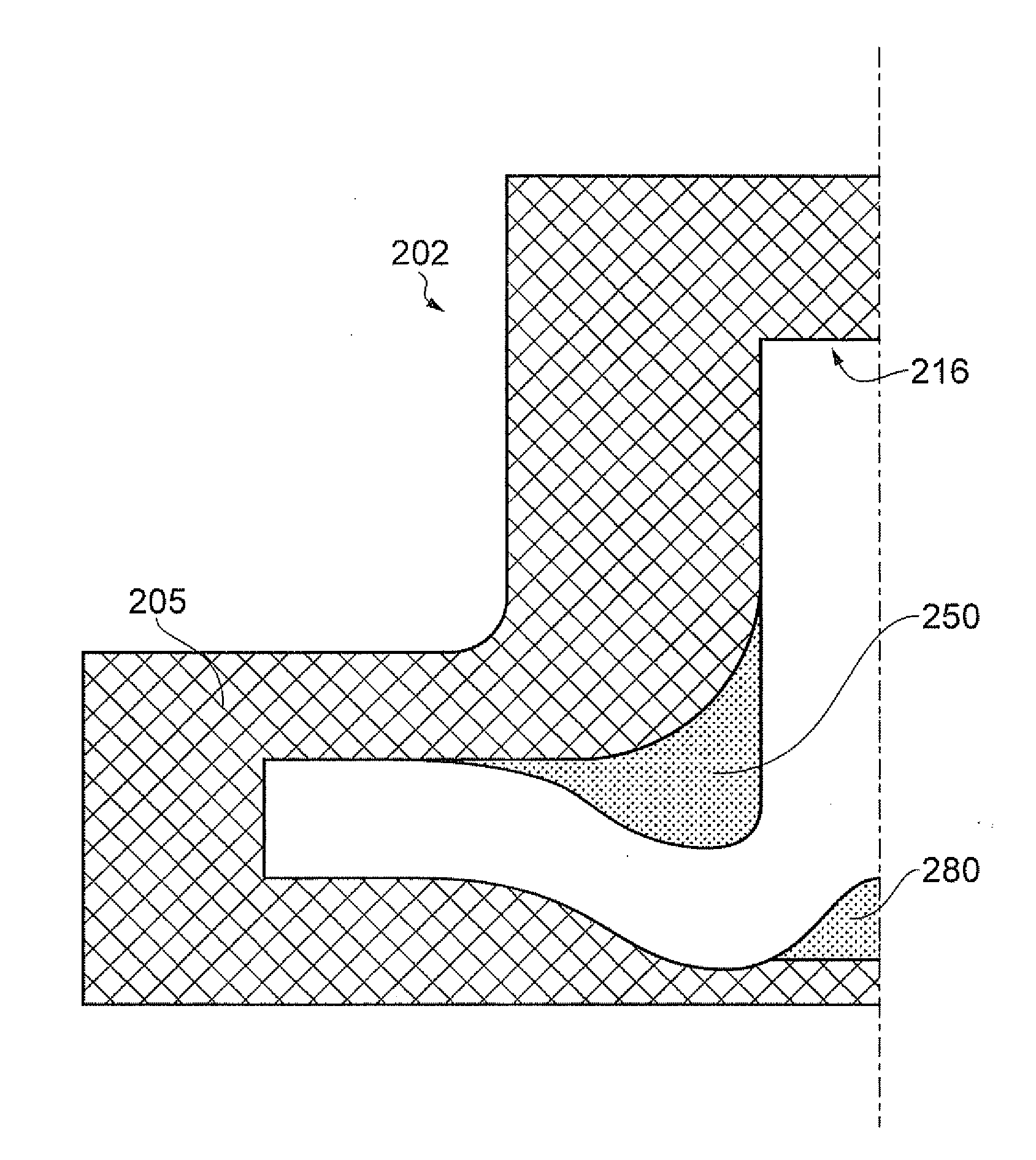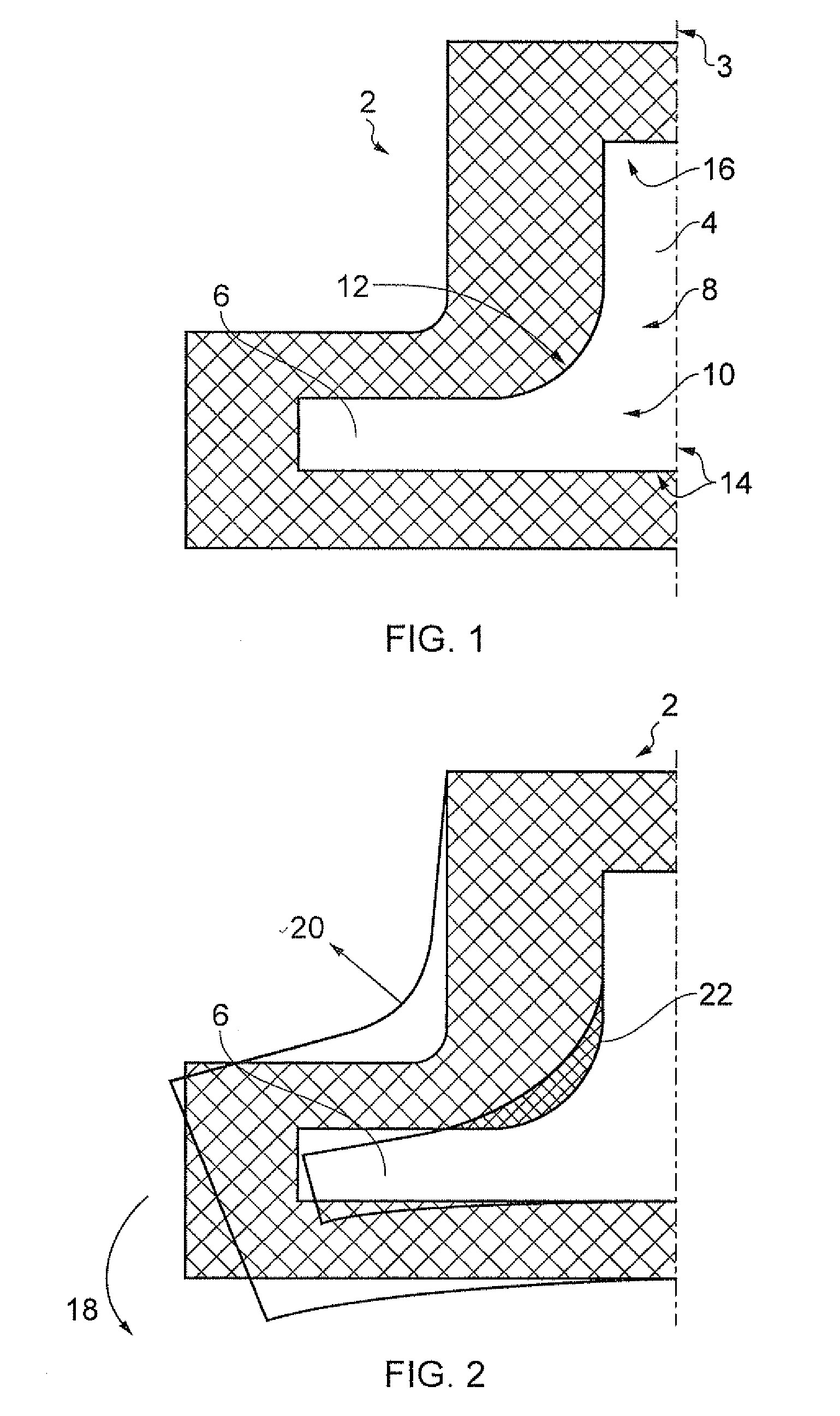Methods and apparatus for forming a composite component
a composite component and composite technology, applied in the field of composite component forming methods, can solve the problems of most damaging the eventual properties of the component, and achieve the effect of significantly reducing the surface area of the fillet region that cannot be desired
- Summary
- Abstract
- Description
- Claims
- Application Information
AI Technical Summary
Benefits of technology
Problems solved by technology
Method used
Image
Examples
Embodiment Construction
[0040]As discussed above, the various aspects of the present invention, both method and apparatus, may be employed singly or in combination to beneficial effect. The following detailed description discloses two exemplary embodiments of mould tooling, each of which embody some combination of the inventive aspects disclosed above. It will be appreciated that alternative combinations of inventive aspects may be considered. Particularly as regards the methods of forming components disclosed and claimed in the present specification, it will be appreciated that the moulds described in detail below represent merely one exemplary manner in which the methods may practically be employed.
[0041]With reference to FIG. 6, a mould tooling 102 for a composite “T” joint component 108 comprises a mould body 105 having a mould cavity 116 formed therein. The mould tooling 102 is illustrated in part section, showing only one half of the tooling. It will be appreciated that the other half of the mould to...
PUM
| Property | Measurement | Unit |
|---|---|---|
| heat | aaaaa | aaaaa |
| thermally insulating | aaaaa | aaaaa |
| radius of curvature | aaaaa | aaaaa |
Abstract
Description
Claims
Application Information
 Login to View More
Login to View More - R&D
- Intellectual Property
- Life Sciences
- Materials
- Tech Scout
- Unparalleled Data Quality
- Higher Quality Content
- 60% Fewer Hallucinations
Browse by: Latest US Patents, China's latest patents, Technical Efficacy Thesaurus, Application Domain, Technology Topic, Popular Technical Reports.
© 2025 PatSnap. All rights reserved.Legal|Privacy policy|Modern Slavery Act Transparency Statement|Sitemap|About US| Contact US: help@patsnap.com



